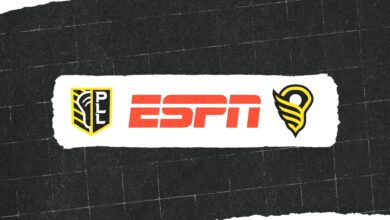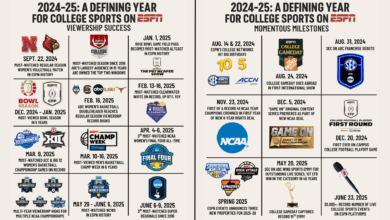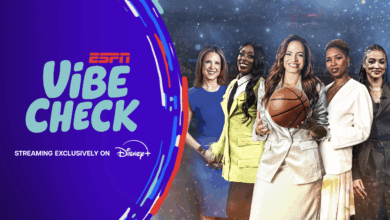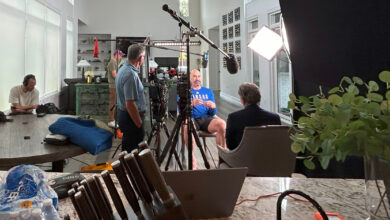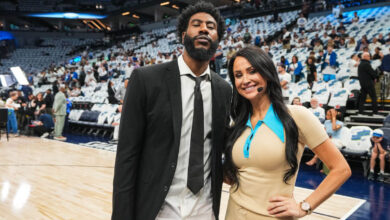Fast Break: Chad Millman
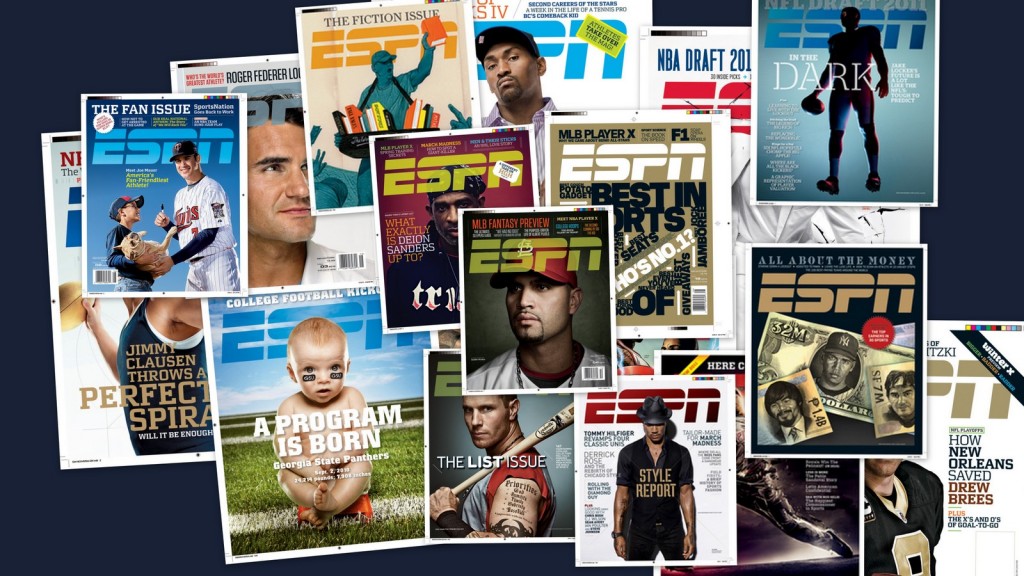 In celebration of ESPN The Magazine’s first official day on the Bristol campus, Front Row gets up close and personal with the man behind the masthead, newly appointed Editor-in-Chief Chad Millman.
In celebration of ESPN The Magazine’s first official day on the Bristol campus, Front Row gets up close and personal with the man behind the masthead, newly appointed Editor-in-Chief Chad Millman.
Millman, 40, a native of Highland Park, Ill., and graduate of Indiana University, began with The Magazine as an associate editor during its inaugural year in 1998. He has also written or co-authored seven books, including two New York Times bestsellers (Iceman: My Fighting Life with Chuck Lidell, and They Call Me Baba Booey), as well as two national best-sellers (The Odds, as well as The Ones Who Hit The Hardest, with Shawn Coyne). He also created the gambling beat for ESPN and will continue his weekly podcasts and columns, in addition to making regular TV appearances to discuss the culture of sports betting.
 After a year-long transition for The Magazine, Millman offers some insight on being the new kids on the block and a few other topics in this Fast Break.
After a year-long transition for The Magazine, Millman offers some insight on being the new kids on the block and a few other topics in this Fast Break.
FR: Today marks ESPN The Magazine’s first official day in Bristol. Any butterflies? What’s your mindset as the magazine transitions to its new home?
CM: Relieved and thrilled. We’ve been through a long transition that began with the announcement we were moving last summer. Since then we had several months of people contemplating what they were going to do with their lives, careers, families, etc. Then several more months of people either figuring out where they were going to live if they were staying with ESPN, or what they were going to do next if they weren’t. It’s a lot of mental energy spent on stuff other than putting out the magazine. I think the entire New York crew that moved will be relieved to have transitioned, rather than being in the middle of transitioning. And I’m thrilled because of the talent we’ve seen walk through our door to fill the vacant spots. We interviewed close to 200 people before packing up and felt like we had pretty high-class problems having to choose amongst the candidates. So the enthusiasm putting out the magazine will be pretty high.
FR: Was becoming Editor-in-Chief always your plan?
CM: Not really part of my plan at all. But I’m glad it happened. I was at the magazine when it started in 1998 then left for a couple of years and came back in 2001. I’ve loved seeing how it has evolved. But you always think to yourself, I would do this differently than the person in charge. Still, I do a lot of gambling coverage for ESPN, including writing for Insider, the mag, doing a podcast and some TV every once in a while. My family is pretty happy where we live, so when the move was announced my first reaction was that I’d probably find a way to do that full time for ESPN. But two or three weeks after the announcement the people I reported to at the time mentioned that I should consider going to Bristol because I’d be an editor-in-chief candidate. It was hard not to imagine the possibility. I thought about it for a while because if you take this job you kind of need a strong opinion about what you want to do with the thing, not just some backbencher notions about individual pieces or sections. Do you want to keep the same direction? Do you want to tweak it? Do you want to overhaul it? Do you like the way it looks? Finally I realized, after so long with the mag, I had a lot I still wanted to do with it. So I took the gig. If I hadn’t, I’d probably be trying to convince the new editor to give me assignments.
FR: What is the most interesting part about your job?
CM: I don’t think it’s happened yet. But I imagine it will be seeing the new staff come together and building the magazine we envisioned.
FR: Favorite sports moment?
CM: Bears winning the 1985 Super Bowl. My favorite sports moments attended live are: 1992 4X100 relay at Summer Olympics when Carl Lewis anchored for the gold, Holyfield-Lewis I at MSG, Super Bowl XXXVIII (Panthers-Pats), Super Bowl XLII (Giants-Pats), 2010 Game 1 of NBA Finals (Lakers-Celtics).
FR: Who are your favorite writers?
CM: Rick Bragg, Aaron Sorkin, Bruce Springsteen (not listing sportswriters for fear of alienating everyone I work with now or hope to in the future).
FR: What would most people not know about you?
CM: I’ve got a surprisingly slow first step, really embarrassingly slow for the guy who is almost always the shortest person on the court. I also love cooking shows, even though I don’t cook.
FR: Beyond gaming what are some of your other interests?
CM: I have two young sons and a wife who I like to see. The older of the two boys has no interest in sports, which means I spend a lot of time trying to learn about dragons. The younger is four and thinks he’s 10 so I spend the rest of the time teaching him how to land safely. My wife is an architect so I also pretend I understand contextual relationships between spaces.
FR: What piece of advice were you given (and by whom) that you still consider invaluable to this day?
CM: When I graduated college I went to work as a reporter at Sports Illustrated. I got the gig partially because I had spent a college summer working for a former senior writer there, Rick Telander, while he researched a book. Shortly after I started, Rick and I were sent to Dallas because the SI editor wanted to do an entire issue about a week with the Cowboys. Our first day at the Cowboys facility there were no players around. It was an off day after they had a Thanksgiving game. We spent the whole day waiting around, looking for something to report on. Then we left with nothing. It was one of my first big assignments and I was a little frustrated and freaked out. Rick said, “Whatever, we’ll make some calls, find some people, then it will all work out.” He was right. It did. The job is different, the principal is the same.
FR: How do you feel about the Player X columnist concept? Something we’re going to see more of in future issues? Any qualms with the concept?
CM: For a while towards the end of last year I felt like it had passed its moment. The columns weren’t hitting with enough specificity about what it’s like inside the locker room. When I was thinking about the magazine post-move, it was something I was going to consider killing. Then we latched on with a firebrand NBA guy who, during his run, elevated the column into what I think it can always be: a provocative talking point. So now I think we’ll keep it for a bit longer to see if we can duplicate that success. I don’t have any issues with the concept. We don’t just let the guy go on a rant without fact-checking it. We also run what they say by our beat writers in each sport to make sure the writer isn’t exercising an agenda. That was the case when our NBAer called out Kevin Garnett. We backed that up with a lot of sources.
FR: What do you say to people who question the future of the traditional print media in general and ESPN The Magazine in particular?
CM: Who knows. I like to think they matter and have a future because I’m a magazine editor right now. I truly don’t think there is a reader problem for magazines; there has been an advertising problem. However, that’s not the case with ours. Our ad pages have consistently been up while the rest of the market has been down. And our readership is as high as it’s ever been. According to the metrics, we are the biggest men’s magazine for 18-34 year olds in the market. Not just sports, but among all magazines, including Men’s Health, Esquire, GQ and Maxim. I also like to think that having a magazine platform matters to a multi-media company and that we provide something different than TV or dot com or mobile can.
Of all the ESPN entities, the magazine is the one that sits with our fans the longest. Research shows they pick it up and read it more than once over the course of a publishing cycle and will save it to review it. From those perspectives, it’s the stickiest thing ESPN does. Plus we are not a horrible magazine. There was a week this past May where we beat National Geographic and several other mighty publications for a National Magazine Award in feature photography. Then we beat the Wall Street Journal to win a New York Press Club for our work investigating concussions. So, this is what I tell people when the question of our future comes up, which it did a lot while we interviewed candidates. Then again, nobody knows nothing. And if we get shut down, we’ll all make some calls and it will all work out.

